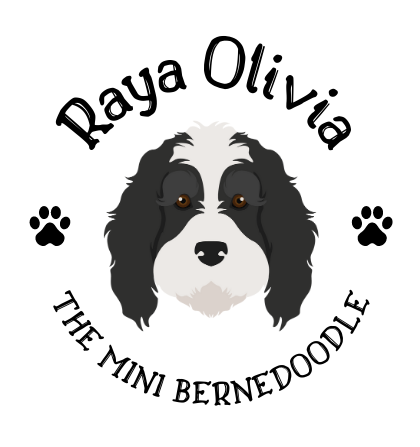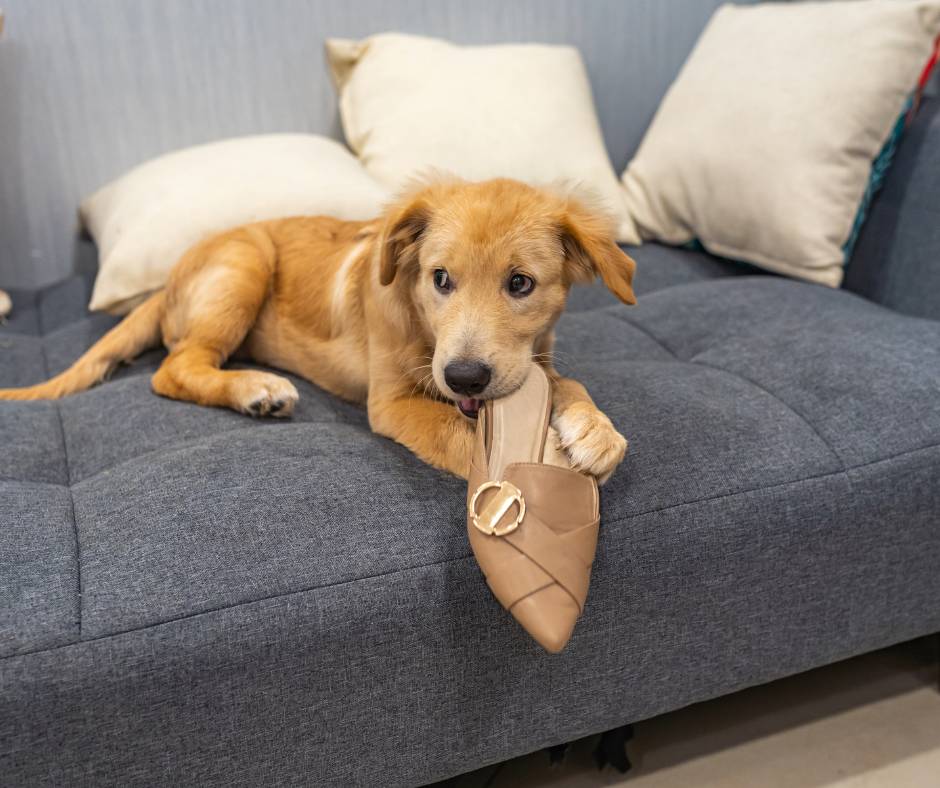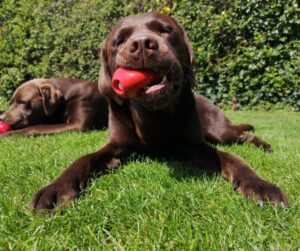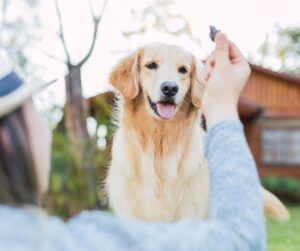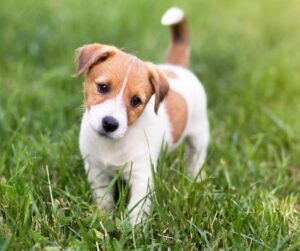How to Train a Puppy Not to Bite: Nipping the Problem in the Bud
Puppies are adorable, playful, and curious creatures. However, they are also known for biting and nipping, which can be painful and destructive.
This behavior is natural for puppies as they explore their surroundings and learn about their environment.
However, it is essential to teach them bite inhibition from a young age to prevent them from becoming aggressive dogs in the future.
In this blog post, we’ll explore effective strategies and tips to train your puppy not to bite, ensuring a safe and enjoyable interaction with your furry friend.
Some of the links on this page are affiliate links. This means that, at zero cost to you, I will earn an affiliate commission if you click through one of the links and make a qualified purchase.
Understanding Puppy Biting
Puppy biting is a common behavior among young dogs.
While it may seem cute and harmless at first, it can quickly become a problem if not addressed properly.
In this section, we will explore the reasons why puppies bite, when they are most likely to bite, and how they learn to control their biting behavior.
Why Puppies Bite
Puppies bite for a variety of reasons. One of the main reasons is teething.
Just like human babies, puppies go through a teething phase where their teeth are growing and they feel the need to chew on things to relieve the discomfort.
Another reason puppies bite is because they are exploring their environment and learning about their surroundings. Biting allows them to interact with objects and people in their environment.
Additionally, puppies may bite as a form of play. Play biting is a natural behavior for puppies, and it is how they learn to interact with other dogs and humans.
However, it is important to teach them that biting is not an acceptable form of play.
When Puppies Bite
Puppies are most likely to bite when they are excited or overstimulated.
They may also bite when they are scared or anxious. It is important to recognize the signs that a puppy is about to bite, such as growling, barking, or lunging, so that you can intervene before the biting occurs.
How to Train a Puppy not to Bite
There are several ways to train a puppy not to bite. One effective method is to use verbal cues like “ouch” or “no” to teach them that biting is unacceptable.
Another way is to introduce them to other dogs to help them learn the consequences of biting naturally.
Additionally, providing them with age-appropriate toys to chew on can help redirect their biting behavior.
It is crucial to start training them as early as possible to establish good habits and prevent aggression.
Let’s break down exactly how to train a puppy not to bite.
Related Posts
How to House Train a Puppy: Potty Training 101
Bringing a Puppy Home: Making the First Day a Success
How to Train a Bernedoodle: Step by Step Guide
Socialization and Bite Inhibition
Early socialization is key to teaching puppies bite inhibition.
Encourage positive interactions with other puppies and well-mannered adult dogs.
Through gentle play, these interactions teach puppies to control the pressure of their bites and understand their limits.
Use Redirected Attention
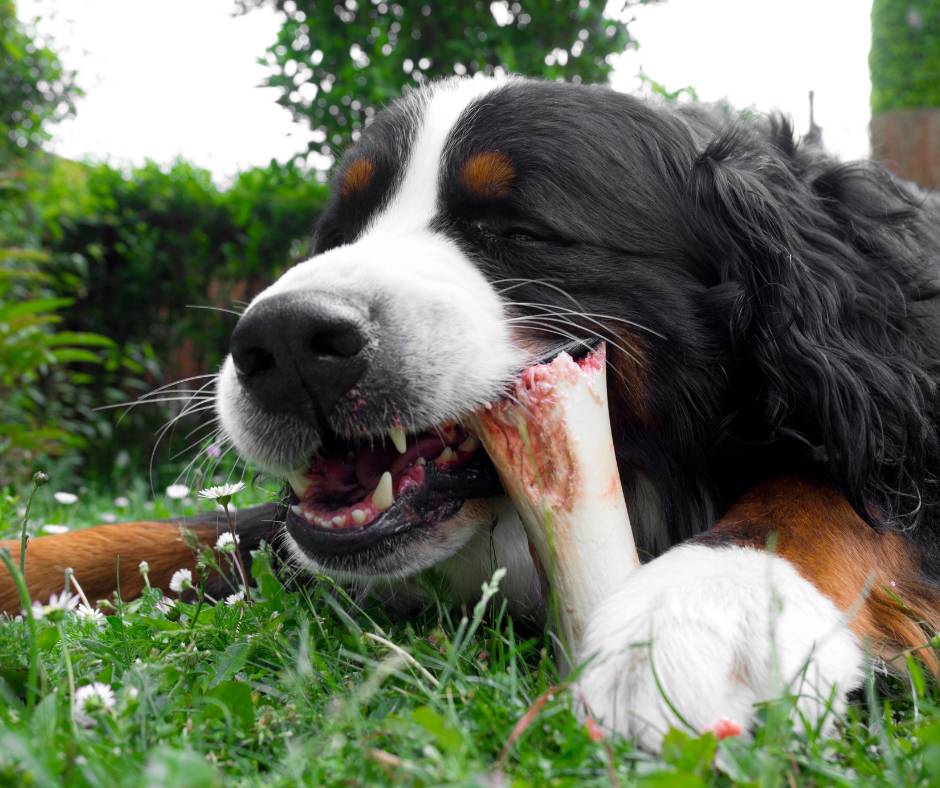
When your puppy starts to bite, redirect their attention to an appropriate chew toy or bone.
Encourage them to chew and play with the designated items, rewarding them for making the right choice.
Consistency is key; redirect their focus every time they attempt to bite inappropriately.
Consistent and Clear Communication
Establish clear boundaries by using consistent verbal cues.
When your puppy bites, say “No” firmly and redirect their attention to a suitable chew toy.
Be patient and persistent, as it may take time for your puppy to understand and respond to the cues consistently.
Positive Reinforcement
Reward your puppy for good behavior.
Praise and give treats when they refrain from biting or choose appropriate toys.
Positive reinforcement encourages your puppy to repeat the desired behavior and helps them associate good behavior with positive outcomes.
Timeouts and Withdrawal of Attention
If your puppy persists in biting despite redirection and verbal cues, employ timeouts or withdrawal of attention.
When your puppy bites, say “Ouch” in a high-pitched tone to mimic the yelp of a littermate.
Then, calmly walk away and ignore your puppy for a brief period.
This teaches them that biting leads to the loss of attention and playtime, discouraging the behavior.
According to The Kennel Club, this is one of the most effective techniques to show your puppy that it’s not ok to bite you.
Avoid Rough Play
Avoid engaging in rough play with your puppy, as it can escalate into biting.
Discourage games that involve grabbing or wrestling, as they may encourage inappropriate behavior.
Instead, focus on interactive toys and games that promote positive interaction and mental stimulation.
Provide Adequate Exercise and Stimulation
Puppies have a surplus of energy that needs to be channeled appropriately.
Ensure your puppy receives regular exercise and mental stimulation through playtime, walks, and interactive toys.
A tired puppy is less likely to engage in excessive biting or destructive behavior.
Seek Professional Help if Needed
If your puppy’s biting behavior persists or becomes a concern, consider seeking guidance from a professional dog trainer or behaviorist.
They can assess the situation, provide tailored advice, and help address any underlying issues that may contribute to the biting behavior.
If a dog trainer is out of your budget, you may also consider an online dog training course that will give you actionable strategies and show you step by step how to train a puppy not to bite.
Be Patient and Consistent
Remember that training takes time and patience.
Stay consistent with your training techniques and expectations.
Each puppy learns at their own pace, so be prepared for setbacks and remain positive and consistent in your approach.
Reinforce Good Behavior with Socialization
Continue to expose your puppy to different environments, people, and animals.
Positive socialization experiences build confidence and teach your puppy appropriate behavior when interacting with others.
Conclusion
In summary, understanding why puppies bite, when they are most likely to bite, and how they learn to control their biting behavior is crucial for training a puppy not to bite.
Training a puppy not to bite requires patience, consistency, and positive reinforcement.
By implementing these strategies and techniques, you can guide your puppy towards developing proper bite inhibition and appropriate behavior.
Early intervention and a loving, consistent approach are the foundations for a well-mannered and happy adult dog.
Enjoy the journey of training and bonding with your puppy, knowing that your efforts will result in a well-behaved companion for years to come.
Recommended Products
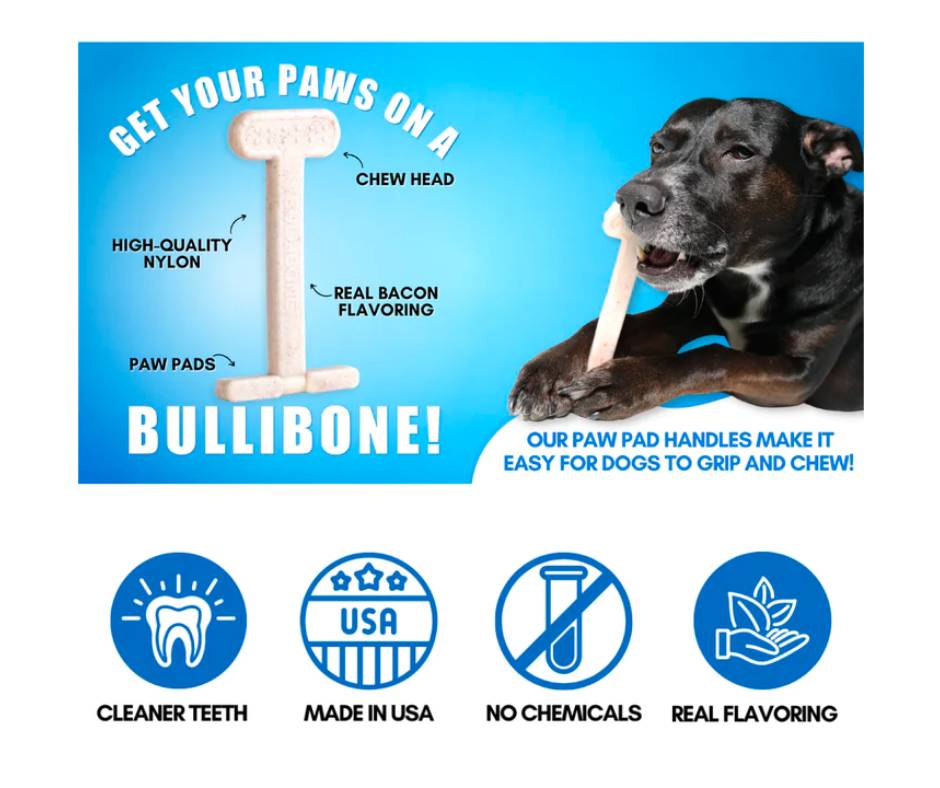
Bored dogs are bad dogs! That’s why you need the Bullibone chew toy!
This new breakthrough tow design is keeping dogs entertained for hours in a safe, natural and affordable way!
Dogs investigate with their mouths, because they don’t have hands. When left alone, they can get anxious and exhibit damaging behaviors such as chewing household items.
That’s where bullibone comes in!
With only two ingredients, Bullibones are ultra durable and have been shown to to improve dental health as they chew.
Bullibones help to improve your dog’s mental health as well, by keeping them stimulated and reducing stress. Leaving your dog with a tasty Bullibone to chew can also help with separation anxiety by exhausting excess energy and keeping them entertained.
